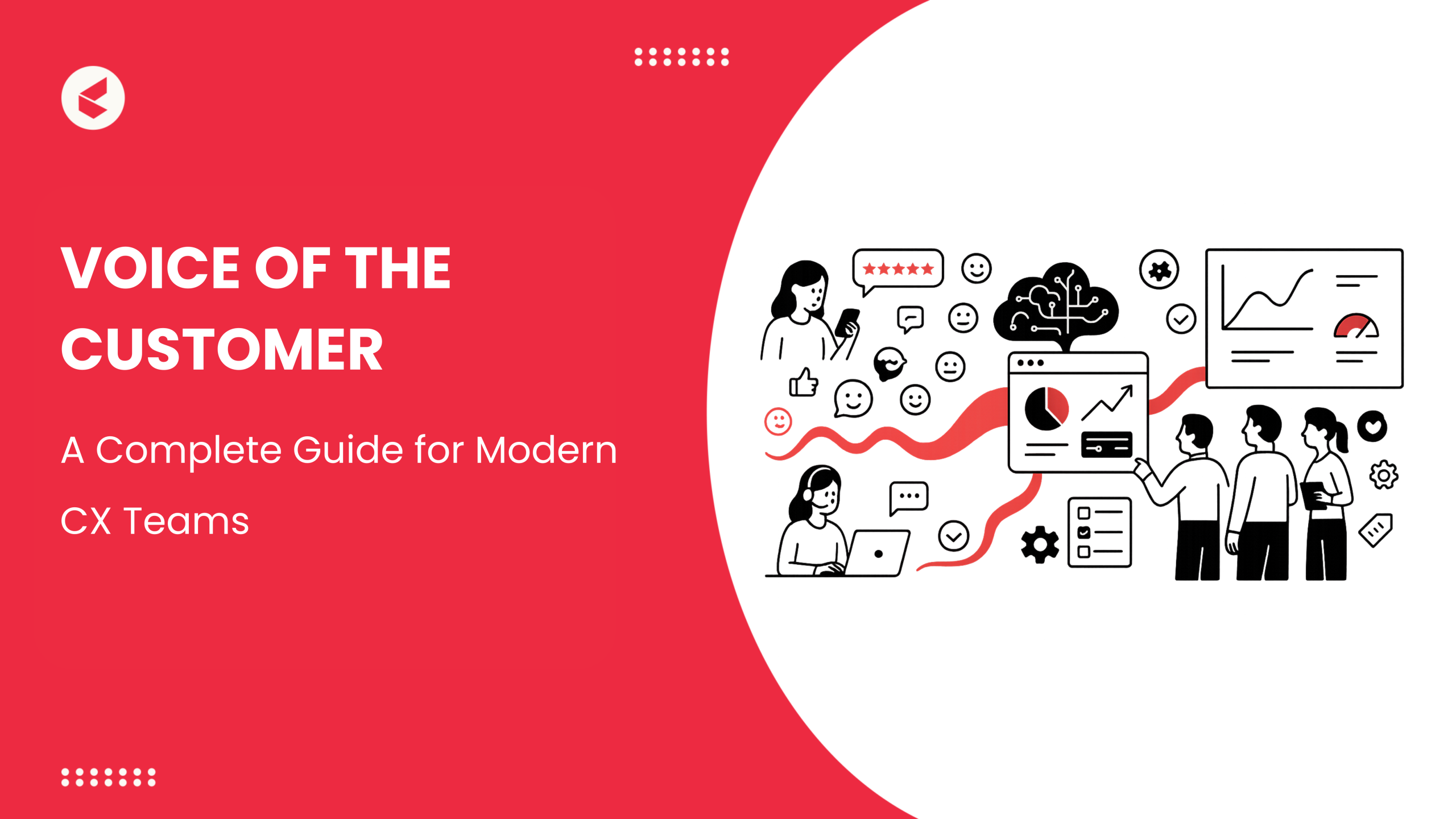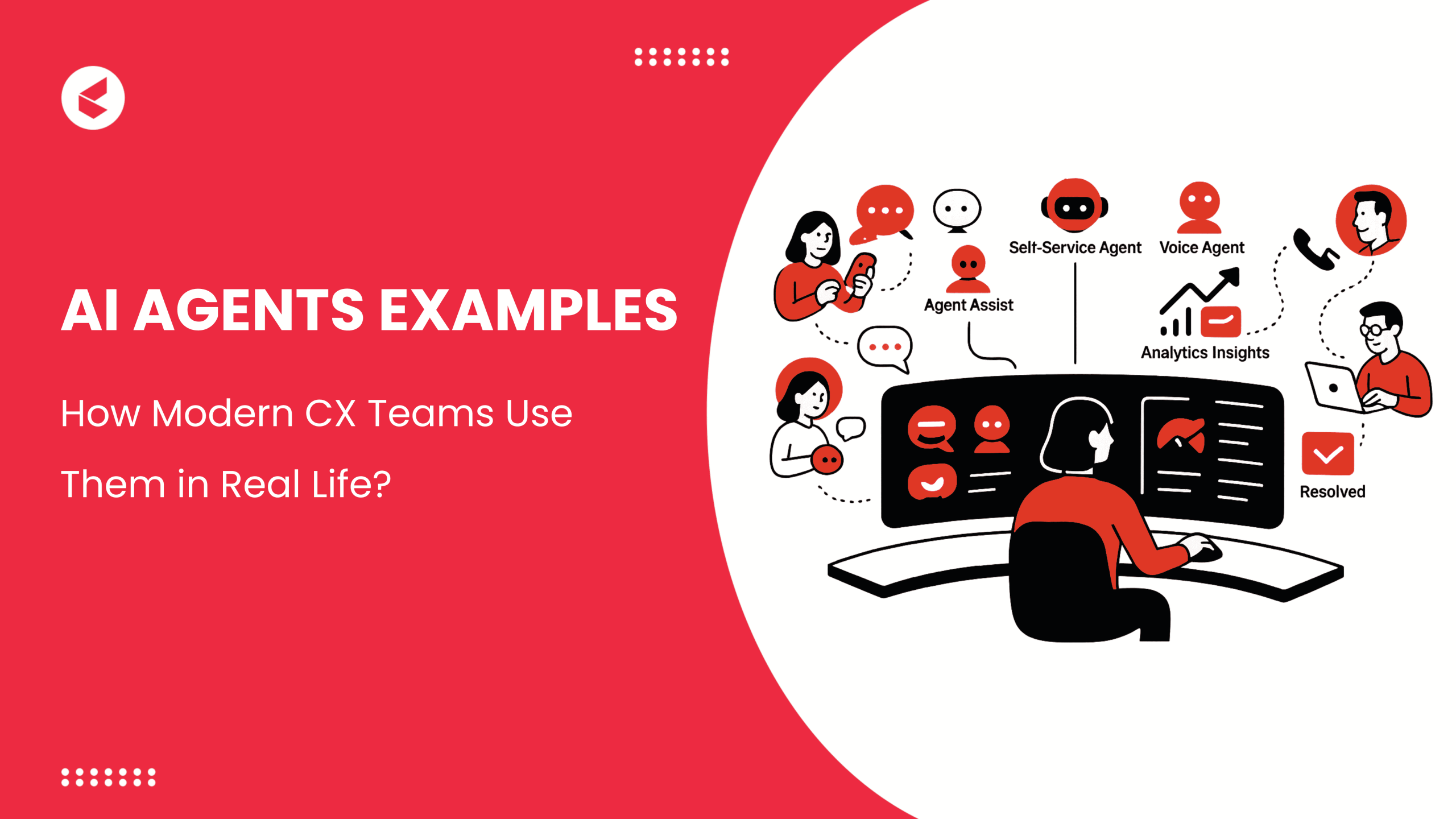Customers use numerous channels to get in touch with your business. They hop channels throughout the customer lifecycle, necessitating a strategy that provides a unified customer experience across all channels they use.
Businesses must mark their presence in every popular channel where customers linger to deliver service promptly.
“90% of customers jump between channels and devices throughout their day.”
What is Omnichannel Customer Experience?
An omnichannel customer experience is a comprehensive and connected journey spanning all customer touchpoints, aiming to improve the customer encounter with your brand via their preferred device or channel.
The omnichannel experience is delivered through the integration and synchronized operation of all channels used to interact with customers.
Touchpoints such as websites, email, social media, live chat, phone calls, and live-agent assistance are seamlessly connected, allowing agents a complete picture of the customer experience. Customers can continue their journey from one touchpoint to another without losing context.
For instance, if you buy a product online and chat with support on Facebook about an issue, the service center will have all your purchase information, including past orders and interactions, providing relevant context to address your query.
Omni-Channel Vs. Multi-Channel Experience
Consider the above example without an omnichannel experience. Messaging support on Facebook and then visiting the service center would require explaining the issue again, as the channels aren’t connected.
In both scenarios, you have interacted with the agent over the online and offline channels but in the latter, the channels weren’t connected. This left the service agent with no context on what was happening with the customer, delivering a poor customer experience.
In a multichannel experience, customer information exists in silos, making it hard to achieve a complete customer picture. An omnichannel experience, however, integrates multiple channels seamlessly.
Multi-channel
- Numerous but unconnected channels.
- Lacks a coherent framework for guiding customers.
- Customer data exists in silos.

Image: Multi-channel Vs Omnichannel
Omnichannel
- Channels are coherently integrated.
- Offers a seamless customer experience.
- Synchronizes customer data across channels.
Why is an Omnichannel Customer Experience Important?
An omnichannel experience ensures your business stays customer-centric and committed to delighting customers.
According to Harvard Business Review, “73 percent of all customers use multiple channels during their purchase journey.”
Therefore, it is essential to interlink these independent channels coherently to form an omnichannel to make it convenient for customers and agents to access a single source of truth (SSOT).
According to Gladly’s 2021 Customer Expectations Report, “73% of consumers get frustrated when they have to explain their issues over and over again.”
So, delivering an omnichannel experience is essential for businesses to stay competitive.
Benefits of Omnichannel Customer Experience
The omnichannel experience helps in delivering a smooth customer journey and keeps customers satisfied, leading to higher retention and revenue.
Read about some of the beneficial ways in which an omnichannel experience benefits customers and the support team alike.
1. Consistent Customer Experience
The omnichannel approach offers a consistent experience regardless of the device or channel used.
It is because an omnichannel platform lets all channels work harmoniously and helps customers smoothly navigate the customer journey undividedly.
With the omnichannel experience, customers can connect or disconnect with you at any of the touchpoints and come back to where they left off through a different channel, with all the contexts perfectly in place.

2 . Improved Speed of Customer Support
For your service agents, omnichannel means service agents save bandwidth through quick query resolution, as there’s no need to switch screens for customer information.

3. Increases Customer Retention
When customers feel that they are being offered a seamless and consistent experience across channels, it leads to better customer engagement and loyalty, increasing the customer retention rate. Omnichannel opens up more dedicated channels for customer support paving the way for deeper customer engagement and creating more loyal customers eventually.

4 . 360-Degree View of the Customer Journey
The omnichannel experience maintains information across all channels, providing a complete picture of customer interactions with your business. A deeper understanding will allow businesses to improve the personalization of the customer experience.
5. Upholds Brand Image
With the omnichannel approach, you have every opportunity to offer great customer service at all touchpoints set your business apart, improve visibility and loyalty, and thus stand out from the competition.
How to Build an Omnichannel Customer Experience?
The major reason businesses fail to deliver a fulfilling experience to customers in the digital space is that they are unaware of the customer’s needs and preferences across all touchpoints. Understanding customer needs and preferences across all touchpoints is crucial for creating an impeccable journey. The customer journeys are complex and non-linear as they involve the handover from conventional channels to digital channels, which can again vary from customer to customer.
Here are some steps that will help you build an omnichannel experience successfully:
1. Understand your Audience
Understanding the customers’ behavioral patterns from the very beginning is important to creating an impeccable customer journey. Use analytics tools, surveys, or customer interviews to gather valuable data and feedback.
Segment the customers based on the data such as the products they use, frequency of purchase, Lifetime Value, and so on to offer personalized experiences according to the customer persona and value.
2. Map your Customer Journey
Map out the customer’s behavior in the customer journey, such as at what points they shift channels. Identify each customer touchpoint and meet their needs according to where they are in the customer journey.
Figure out the customer engagement at different stages in the customer journey to help you better serve them.
3. Analyze Customer Feedback
Collect customers’ feedback on what channels they prefer to use to interact with your business. Having this data will let you reach out to the customer through their favorite channels, speeding up the interactions. Moreover, the feedback data can tell you whether there are any shortcomings in the customer experience and help you come to the pulse of customer satisfaction
4. Use the Right Technology & Tool
The right technology and tools make the data flow between different channels relatively easy and enable the frictionless collection of customer interaction data from all channels. Be mindful that missing even a single interaction can undermine the purpose of the omnichannel experience.
Robust customer service automation solutions such as Kapture, offer seamless integration such that the service representatives and customers can hop channels coherently without losing data or context.

5. Effective Self-Serve Options for Customers
Bestowing customers with the power of autonomy in finding solutions to their problems across the customer journey helps eliminate friction points/frustrations of not being able to find information.
Artificial Intelligence-powered intelligent chatbots, for instance, can help customers with transactions or solve complex issues by providing customers access to troubleshooting guides.
Reach out to us to learn how Kapture’s self-serve solutions can steer your omnichannel strategy forward.
How to Improve the Omnichannel Customer Experience?
To improve the omnichannel customer experience you must focus on adapting your business to meet the customer needs on all channels rather than merely replicating a single brand experience in all channels.
Therefore, the best step you can take in this direction is to improve the value of the service you offer through these channels with extensive personalization. And, here are more tips to improve the omnichannel customer experience,
- Improve the mobile-friendliness of your site, with clear and attractive visuals, and smoother navigation.
- Personalize their experience at all touchpoints such as with recommendations of solutions or products as per customers’ interests and by sending personalized messages.
- Leverage customer data appropriately by explicit segmentation of customer profiles and standardization of the data-gathering process across all channels.
- Improve your response times for customer queries when they pop up through any of the channels. Engage and address all customer queries through live chat, intelligent chatbots, or interactive discussion forums.
- Take a leaf out of the omnichannel success book of the big players in the market and follow suit. Read about the examples of Tesla, Adobe, and Zappos below to learn how they efficiently implement the omnichannel strategy for superior customer service.
Omnichannel Customer Experience Examples
Let us look at how some of the bigwigs in business delight their customers with the omnichannel experience and are more successful than others at it.
1. Tesla
Tesla, an American automotive and clean energy company, lets customers contact their support team in a way that suits the customers best by offering them omnichannel support.
Customers love the convenience of being able to contact them via phone call, email, or chat for help, and as indicated by Tesla’s high prices, customers are ready to pay extra for their service. This example demonstrates how the way services are delivered dramatically improves the level of customer service.
2. Adobe
Adobe, the multinational software company, runs a separate customer service account on Twitter which has helped the brand to respond to urgent queries quickly and effectively.
By implementing a strong omnichannel strategy, Adobe can promptly receive and respond to customer feedback or suggestions on its products and services.
Zappos, the online shoe, and clothing retailer considers providing excellent customer service seriously by way of implementing a powerful omnichannel strategy- as is shown by their posting on the homepages of their Facebook and Twitter accounts.
3. Zappos
“We’re here for you 24/7. Post a comment, Tweet, chat, email, or call us at (800) 927-7671! Let Zappos Social Team WOW you!”- source
“Zappos is our name and service is our game! #Zappos” – source
Zappos is known for providing quick response times to customers across several channels.
These examples indicate how the use of several communication channels results in delivering efficient and organized support to the customers.
Kapture: The True Omnichannel Solution
Kapture, a customer service automation platform, helps brands offer their customers a seamless and uninterrupted journey that kindles loyalty.
We ensure that the channels and technology that your business employs do not operate in isolation; that they are synchronized and together leaving no broken threads of information.
Taking on board the steps mentioned in the blog will give you the vision required to create a comprehensive omnichannel experience, allowing you to witness a rise in customer experience metrics, revenue, and opportunities.













